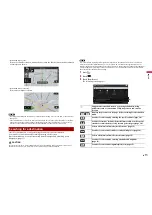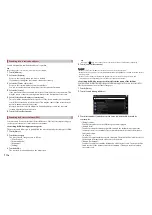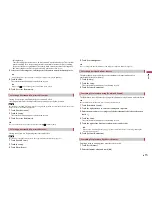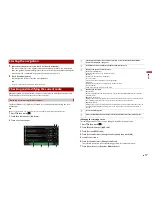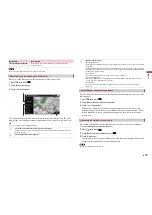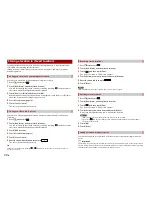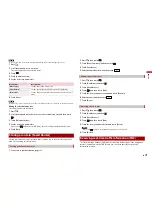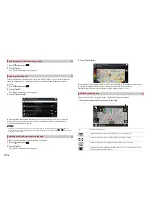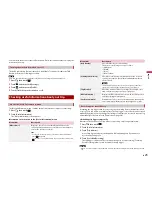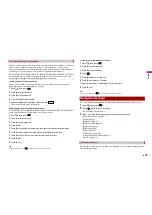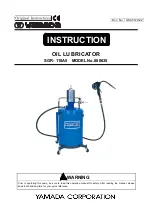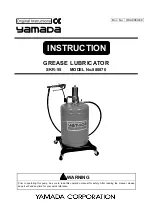
26
En
Menu Item
Description
[Vehicle]
Set the type of vehicle you will be using on the route.
NOTES
•
The route is planned based on the selected vehicle type.
•
Depending on the type selected, the route planning may be
configured to incorporate dimension, weight, and freight hazard
restrictions for maps that contain such data. To enhance the
route accuracy, correctly select a vehicle type that is similar to
the condition of your vehicle.
TIPS
•
To edit the name and estimated maximum speed of the selected
vehicle profile, touch
.
•
To add a new vehicle profile, touch [Add Profile]. Then select one
of the vehicle types and set the name and estimated maximum
speed.
[Car]
•
Manoeuvre restrictions and directional constraints are
taken into account when planning a route.
•
Roads are used only if access for cars is allowed.
•
Private roads and resident-only roads are used only if they
are inevitable to reach the destination.
[Emergency]
•
All manoeuvres available at junctions are taken into
account.
•
Directional constraints are taken into account in the same
way as travel in the opposite direction is allowed at low
speeds.
•
Only private roads that need to be used to access the
destination are included.
•
Walkways are excluded from routes.
[Bus]
•
Manoeuvre restrictions and directional constraints are
taken into account when planning a route.
•
Roads are used only if access for buses is allowed.
•
Private roads, resident-only roads and walkways are
excluded from routes.
[Taxi]
•
Manoeuvre restrictions and directional constraints are
taken into account when planning a route.
•
Roads are used only if access for taxis is allowed.
•
Private roads, resident-only roads and walkways are
excluded from routes.
[Lorry]
•
Manoeuvre restrictions and directional constraints are
taken into account when planning a route.
•
Only roads that allow lorry access are included.
•
Private roads, resident-only roads and walkways are
excluded from routes.
•
U-turns are not used in routes (turning around on a
divided road is not considered a U-turn for the purpose of
this system).
[Route Planning Method]
Set to change the route planning method. Route
calculation can be optimised for different situations and
vehicle types by changing the planning method.
[Fast]
Calculates a route with the shortest travel time to your
destination as a priority. Usually the best selection for fast
and standard cars.
[Easy]
Result in a route with fewer turns and no difficult
manoeuvre. With this option, you can make this system to
take, for example, the motorway instead of a series of
smaller roads or streets.
[Short]
Calculates a route with the shortest distance to your
destination as a priority. Usually practical for slower
vehicles. Rarely practical to use to search for shorter routes
for normal vehicles regardless of the speed.
[Economical]
Calculates a route that is quick and saves fuel.
[Navigation Mode]
Enable or disable off-road navigation.
[On-road]
The route is planned towards the destination along the
roads on the map.
[Off-road]
The route is planned towards the destination in a straight
line, not along the roads on the map.
[Motorways]
Set to off to avoid prioritising motorways for calculating
the route.
NOTE
This function is useful when you want to avoid motorways such as
when driving a slow car or towing another vehicle.
Menu Item
Description


